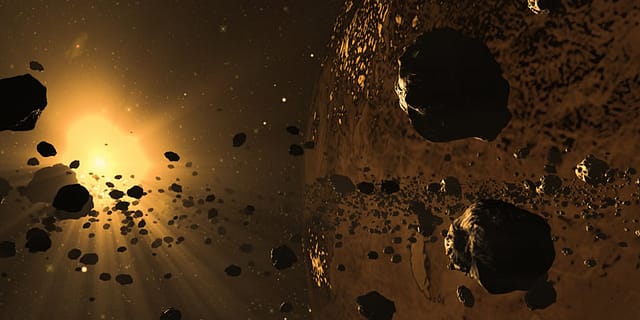Phobos and Deimos, Mars’ lumpy, runty moons, were once pegged as captured asteroids. But the truth is shaping up to be far more interesting. These ruddy satellites could be the lone survivors of a giant impact that eviscerated half of Mars’ surface billions of years ago. That violent origin story is detailed in a new scientific paper, which used numerical models to show that a Deep Impact-style collision in Mars’ past could have produced many moons, most of which are long gone. This hypothesis resolves several mysteries about Phobos and Deimos, and it can be tested by searching for geologic
NEWS
-
-
In a late-day Friday announcement on July 1, 2016, NASA said that the first-ever spacecraft to visit the dwarf planet Pluto – NASA’s New Horizons spacecraft – has received the nod to fly onward to an object deeper in the Kuiper Belt, known as 2014 MU69. This object had not even been discovered when New Horizons was launched in 2006. The spacecraft will rendezvous with 2014 MU69 on January 1, 2019. NASA’s Director of Planetary Science Jim Green said: The New Horizons mission to Pluto exceeded our expectations and even today the data from the spacecraft continue to surprise. We’re
-
Quantum mechanics suggest that seemingly empty space is actually filled with ghostly particles that are fluctuating in and out of existence. And now, scientists have for the first time made an advanced machine known as a quantum computer simulate these so-called virtual particles. This research could help shed light on currently hidden aspects of the universe, from the hearts of neutron stars to the very first moments of the universe after the Big Bang, researchers said. Quantum mechanics suggests that the universe is a fuzzy, surreal place at its smallest levels. For instance, atoms and other particles can exist in states






